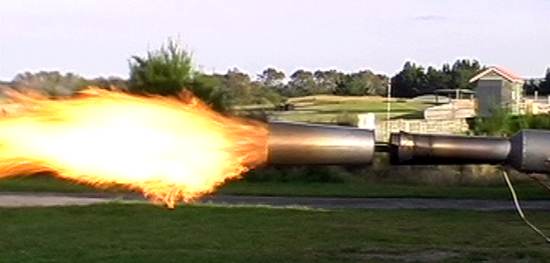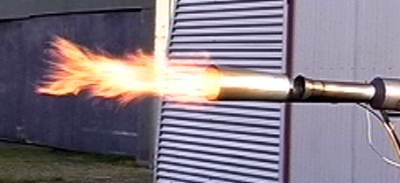Jet engine technologies for interested amateurs
Last Updated: 7 March, 2004
|
I'm going crazy here waiting for our summer to come back so I can get on
with the business of testing my DIY Cruise missile. Unfortunately, our usually
warm, calm and balmy February (the equivalent of July in the Northern Hemisphere)
has produced some of the most violent storms for decades and rainfall that
has been categorized as being seen just "once in a hundred years".
So, to keep myself busy this is what I've been doing...

So I figured I'd try to add an afterburner to one of my pulsejets -- and here's the result.
Design Considerations The other reason why an afterburner shouldn't work on a pulsejet is because during the engine's intake phase, som of the exhaust gases actually reverse direction and are are sucked back into the engine. So how can we add an afterburner to an engine that suffers from these problems? Well clearly we need to do two things:
Even if it didn't work, I was pretty sure it would produce some spectacular flames during testing :-) I haven't yet had time to measure the thrust levels with and without afterburn but, to my surprise, the kart certainly shakes a whole lot more violently which suggests that there may be some kind of improvement. As soon as I get a chance I'll run the kart on the track and see if it's improved the top-speed. In the meantime, here is a video (1.6MB MPEG) for your entertainment :-)
|
|

 So, what would happen if we modified a passive thrust augmentor in such a way
that it functioned as an afterburner? Would it work? That's what I wanted
to find out.
So, what would happen if we modified a passive thrust augmentor in such a way
that it functioned as an afterburner? Would it work? That's what I wanted
to find out.